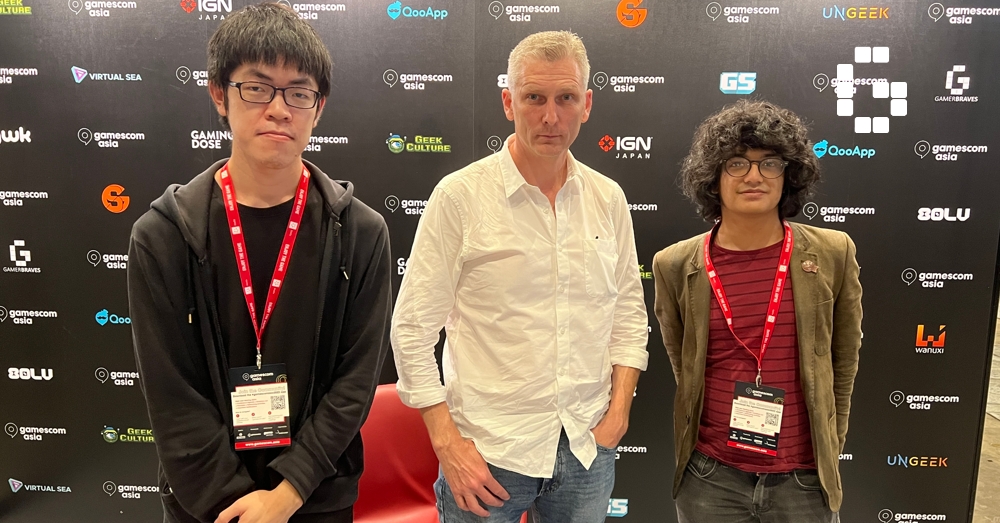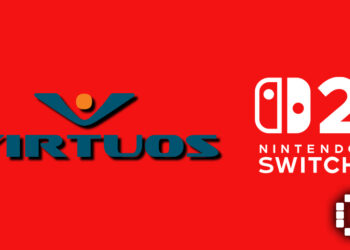Mobile gaming continues to be the dominant form of gaming in many regions of the world including Southeast Asia, in part thanks to their accessibility and the appeal of gacha or character collector games. To tell us more about the recent trends of the platform, we were able to interview Wizards of The Coast’s Senior Vice President & General Manager of Digital Gaming, Tim Fields. He previously worked as the CEO of Kabam Games, most well-known for developing Disney Mirrorverse, a gacha game starring the many iconic characters of Disney. He is the author of the recently published book, Game Development 2042, about the future of the games business.

Before joining Wizards of The Coast, held roles at Capcom, Certain Affinity, Electronic Arts, and Microsoft. He would then go on to act as the CEO of Kabam, where he led in the development of games like Disney Mirroverse as well as Shop Titans and Marvel Contest of Champions, all of which are available for mobile devices.
In this interview, he told us more about Disney Mirrorverse, working with licensed characters, and the responsibility of developers when monetizing video games, especially ones that appeal to younger audiences.
In a lot of Japanese character collectors, characters are original designs made for the game. Kabam’s portfolio on the other hand tends to deal with more licensed characters. Do you feel that helps or hurts the ability to come up with content?

“When you’re building a game, you can create your own characters, create your own intellectual property, or you can use licensed characters. There are advantages and disadvantages to each.
Some of the advantages of using licensed characters. First, there are millions of people around the world who love these characters and get so excited to want to dress up as these characters at cons and cosplay. There are millions of people who will tune into a game just because it has a character they love. So it helps a ton with user acquisition and building an immediate community and fanbase.
Second, game makers, love these characters. I have never worked on a licensed game where people on the team were not truly in love with the characters that they built. With these stories, people get excited to work on Disney, to work on GI Joe, to work on Marvel, because they love these franchises, and because they grew up with the characters in these stories.
You know, our creative director for Marvel: Contest of Champions, which was a very successful game published by Kabam. Nine years ago, he said to me, “Tim, this game is going to be our love letter to the Marvel Universe we all grew up in.” That quote stuck with me because I think a lot of game makers feel that way about the games that they work on. They want to create a tribute to the characters in the worlds that they love. Of course, there’s a lot of freedom in generating your own content. It’s really fun, it’s really exciting, but it’s also scary and difficult because it’s a lot harder.”
Is it the licensor that goes around looking for someone to use their IP or do developers go “hey we want this character” and then reach out?

“Both. Sometimes the game team says I love these characters so much, can we please reach out to so and so and ask if they’ll let us build a game with their characters or integrate their character into our game. That’s one way that it works.
The other way that it works is I was talking to a young man here at Gamescom just a few moments ago representing a company that is looking to find people to develop games based on the IP that they own. So they’re looking for licenses. It works both ways.”
Another difference with Kabam’s portfolio is that it’s much more family-friendly as opposed to other gacha games that have more sexual designs. Do you think we can see bigger less dominance of sexy character-based marketing in mobile games?

“Different communities, different cultures, different demographics, and different people have really different ways that they like to think about characters. I think that one of the wonderful things that have happened over the last few years is that the community of gamers around the world has become a bigger group and more inclusive, and there’s no doubt that some gamers really like characters that are sexualized, but, there are tens of millions more who are turned off by that.
One of the great things that have happened over the last decade or two is that the audience for our games has gotten so much bigger. With that comes a real responsibility to make sure that our games are inclusive and welcoming to almost everyone.”
In like the past month we’ve seen more discussion about the regulations for monetization in mobile games. Do you think games will have issues with mobile game regulation?

“For a very long time, different governments and different governing bodies have regulated the type of content in games and also game mechanics. Slot machines, for example, are very heavily regulated and also have a huge audience, and are very popular. I think that we will see regulations of various sorts continue for a long time and continue to evolve as games become more sophisticated, whether this is rules around needing to display the odds for gacha or the types of content that you can display. Whether that’s sexualized content or violence, content that feels like gambling, or the types of data that you can collect from different audiences, or whether or not you can offer tokens in a web3 game without that being considered a security. There are lots of parts of a game that might be subject to regulation somewhere.
So, One of the things that I’ve written about in my newest book – It’s called Game Development 2042 – Is an interview with a great games industry attorney about where she expects to see regulation going in the games business, and it’s fascinating to hear her thoughts on the topic because as our industry gets bigger, as we move from a few billion players to 4, 5 billion gamers in the world.
The governments will continue to take more interest in regulating what we do, and it’s our job to be good citizens of the world and work closely with governments to make sure that our games are beneficial to our audience and also profitable for us as game makers.”
Since Disney Mirrorverse appeals more towards children, do you think that, at least internally, there should be a limit to how aggressively you can push monetization in the game?

“I can’t talk about Disney Mirrorverse in particular, but I think that the philosophy that we need to make sure we adhere to is that our games should only ever ask of people to spend money when they want to. People should always feel great about what they spend money on. Now that’s not always possible, but that should always be your guiding principle.
Obviously, games that target younger audiences need to be more thoughtful and more careful about how they make money and there are different laws in different parts of the world about how you can about, what you can sell to children and so that’s something you have to be very cognizant of, very careful with.
I think the single biggest piece of advice I would offer to people who are making games is to think carefully about who your audience is, understand very carefully what your responsibilities to that audience are, and make sure that you’re giving them a great experience that is sensitive to who they are and also profitable for you as a business.”
One disturbing trend in mobile games is over-reliance on grinding and busy work to boost player time spent on games, but usually at the cost of fun. How do you keep this in check?

“When you’re building entertainment, one of the things that you have to understand or think about is what type of experience you want people to have. There are some people that want a game that they can play nonstop for hours and hours. Ever Merge, for example, is a game that my wife loves and she describes it as like knitting, something to do with her hands while her mind is thinking about other things.
Now, is that game grindy? Well, I don’t know, but you can certainly pour 15 hours a day into it forever. Other games, particularly narrative-driven single-player games tend to be much more direct. They’re more like a movie or a television show where you watch it and there’s a very finite amount of entertainment. So I guess when I think as a game designer about how grindy a game should be, I guess the real question I’m asking is: “How long do I want you to be able to play this game?”
Another trend we’ve noticed is that bigger brands tend to have more collaborations with mobile games compared to console games. For example, new superhero movies may have skin in a popular mobile game compared to a console game. Can you tell us more about this?

“First, the number of people who play mobile games is just staggeringly higher. If the sales are similar to something like say, Elden Ring, great, that game might sell 20 million copies in its life. But a mobile game where things go great can reach 200 million players. So when you’re doing integration for a character or something similar, you’re likely to go for the product that has the larger audience size.
Second, there’s the price of creating a console game. Back in the year 2000, you could build a pretty good console game for five or $10 million. And nowadays it’s very challenging to build a console game, AAA console game, for less than $50 million. A truly great one can cost $150 million or more and take a long time.
So you don’t get that much lead time for working with new movies and things like that. Since you’re going to spend that much money, you have to make very sure it is going to sell a lot of copies. Those, are some of the reasons that you tend to see more integrations into mobile games these days, but also into other games like Fortnite, as opposed to wholly new licensed games.”
It feels like there are definitely some mobile games blurring the line between console and mobile releases, do you think playing catch-up with consoles is a way forward for the medium?

“I think that we are entering a world in which gamers want to be able to play the games that they love with their friends on whatever device is most convenient at that moment. So, when my nephew is riding home on the bus, he wants to be able to play a game on his phone.
As soon as he gets home, he wants to be able to set his phone down and boot up his PC, and he wants to be able to jump into Fortnite with his friends. When it’s time to go have dinner in the living room, he wants to turn on his big TV and grab his fancy controller and play that same game with those characters with the same friends on a big fancy TV, on a console. I think that Fortnite showed us the way, and I think that within a few years, most games will offer users a way to engage on most platforms, mobile, PC, and console.”
Do you think that means there will be fewer hyper-casual games on mobile in the future?

“There are some games that are best suited to a particular input and display device, right? Hyper casual games, by their nature, tend to be very short play durations most of them, and fairly approachable graphics with a very basic mechanic and often not a huge amount of depth.
In other words, they are perfect for bite-sized snacks on a phone. You could play them in a web browser for example, and people do. So I think there will always be some games that are best suited to particular input and display mechanisms. And that’s the best way to think about different platforms.
They’re all just computers with screens and some way that you give input. The question is just what’s the right input mechanic? What’s the right display model? Whether it’s a giant TV or two screens strapped to your eyeballs [VR] or a small device you can put in your pocket.”
What do you think about the fact that mobile games are becoming more resource intensive as time goes on?
“We are lucky that phones continue to advance so rapidly that we’ve got huge amounts of RAM, great processing, beautiful screens, and really good operating systems. We’re even luckier that the best phones in the world will also be so affordable that people anywhere in the world can have access to them. What that means is we can make great games that get better every year that are playable for billions of people all over the world. As a toy maker, what could be cooler than that?”

The success of the mobile gaming market, especially in regard to gacha games will likely continue to be a major factor in how the video game industry develops going forward. We actually previously covered a talk by Tim Fields at Gamescom Asia where he discussed his predictions on where video game development will be in twenty years, Something that’s worth keeping in mind for any aspiring devs out there.
We thank Tim Fields for speaking to us in this interview and wish him and his current team the best of luck going forward.









![[GUIDE] Persona 5: The Phantom X Codes & How To Redeem Them](https://cdn.gamerbraves.com/2025/07/P5X-Codes_Guide_FI-360x180.jpg)



![[ASIA EXCLUSIVE] Bringing Back a Classic: Inside the Making of FINAL FANTASY TACTICS – The Ivalice Chronicles](https://cdn.gamerbraves.com/2025/06/FFT-Ivalice-Chronicles_Interview_FI2-360x180.jpg)


![[EXCLUSIVE] Gearbox Executives Share Details on Borderlands 4 – Story, Weapons, and Lessons Learned](https://cdn.gamerbraves.com/2025/06/Borderlands-4_Interview_FI-360x180.jpg)
![[EXCLUSIVE] Wan Hazmer Reveals How No Straight Roads 2 Expands Beyond Vinyl City with Shueisha Games](https://cdn.gamerbraves.com/2025/06/NSR2_Interview_FI-360x180.jpg)












